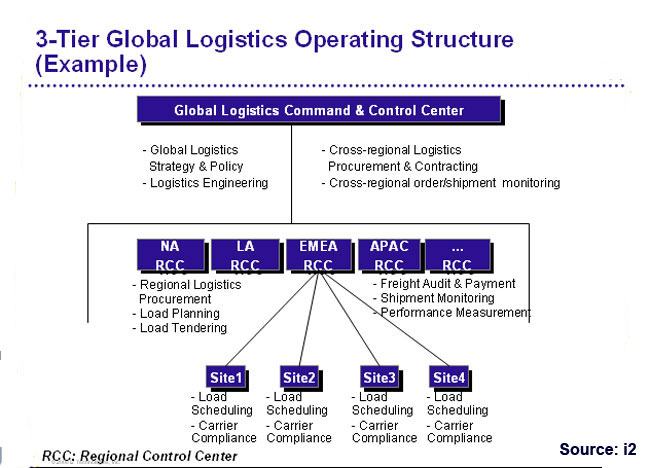
Mark Whittaker, Vice President of Transportation at Pepsico, said at a recent i2 User Conference that different businesses within the company have the option of using the central transportation services or not.
“But most of them do use us after they see the capabilities we can bring,” Whittaker said.
In addition to defining the basic structure and operating mission of the transportation group, a logistics operating model also needs to define what functions and capabilities are centralized, what are performed at a regional level, and what at a local level. On top of that, decisions about what to keep in house and what to outsource at each level also need to be made.
“Remember, think global, plan regional, and act local,” says Gene Tyndall, SCDigest Contributing Editor and Executive Vice President at Tompkins Associates.
“There are clearly some functions that make sense to be doing at a global level,” says Gaurav. “For example, doing on-going network analysis, in terms of looking for opportunities that may exist within your network for creating savings, or reducing lead times. It makes sense to have a centralized engineering team that can be leveraged across your total network to perform that function.”
Gaurav said other functions, such as 3PL sourcing and contracting, carrier sourcing and global rate negotiations, and visibility functions are all examples of capabilities that may make most sense to operate a centralized, global level.
However, functions such as load planning are probably best suited to development of regional (e.g., North American) capabilities. Freight audit and payment is another example of a function that often makes sense to operate regionally, as well as regional track and trace.
Finally, other functions, such as appointment scheduling and carrier compliance, are often best served by local execution.
He says more and more companies are formally documenting roles and processes, and adding the required supporting technology, at each of these levels in a three-tiered operating model (see illustration nearby).
He also said that it is critical to properly structure performance metrics at each of these levels commensurate with how the operating model has been defined.
Some of Gaurav’s comments were made during a recent Videocast from Supply Chain Digest on “Leading Edge Logistics.” Part 1 of that outstanding broadcast is now on-demand. Part 2 will be broadcast soon. To see this or any on-demand Videocast, or to register for an upcoming event, please visit our Videocast schedule page: Supply Chain Digest Videocast Schedule.
Do companies need formal definitions of their Logistics Operating Models? What should be included in that definition? What are the key factors in determining what is performed globally, regionally, and locally in transportation management? Let us know your thoughts at the Feedback button below. |